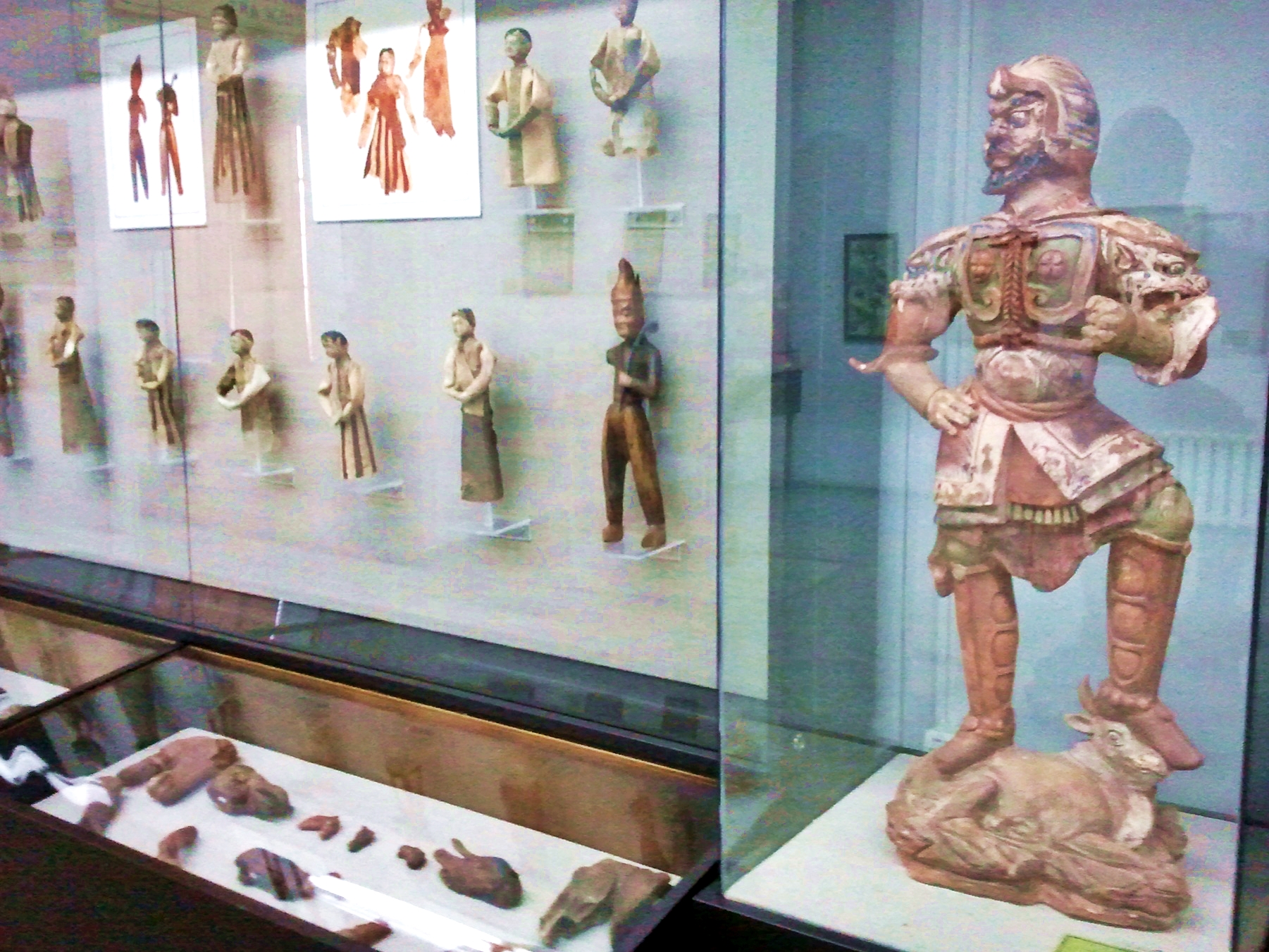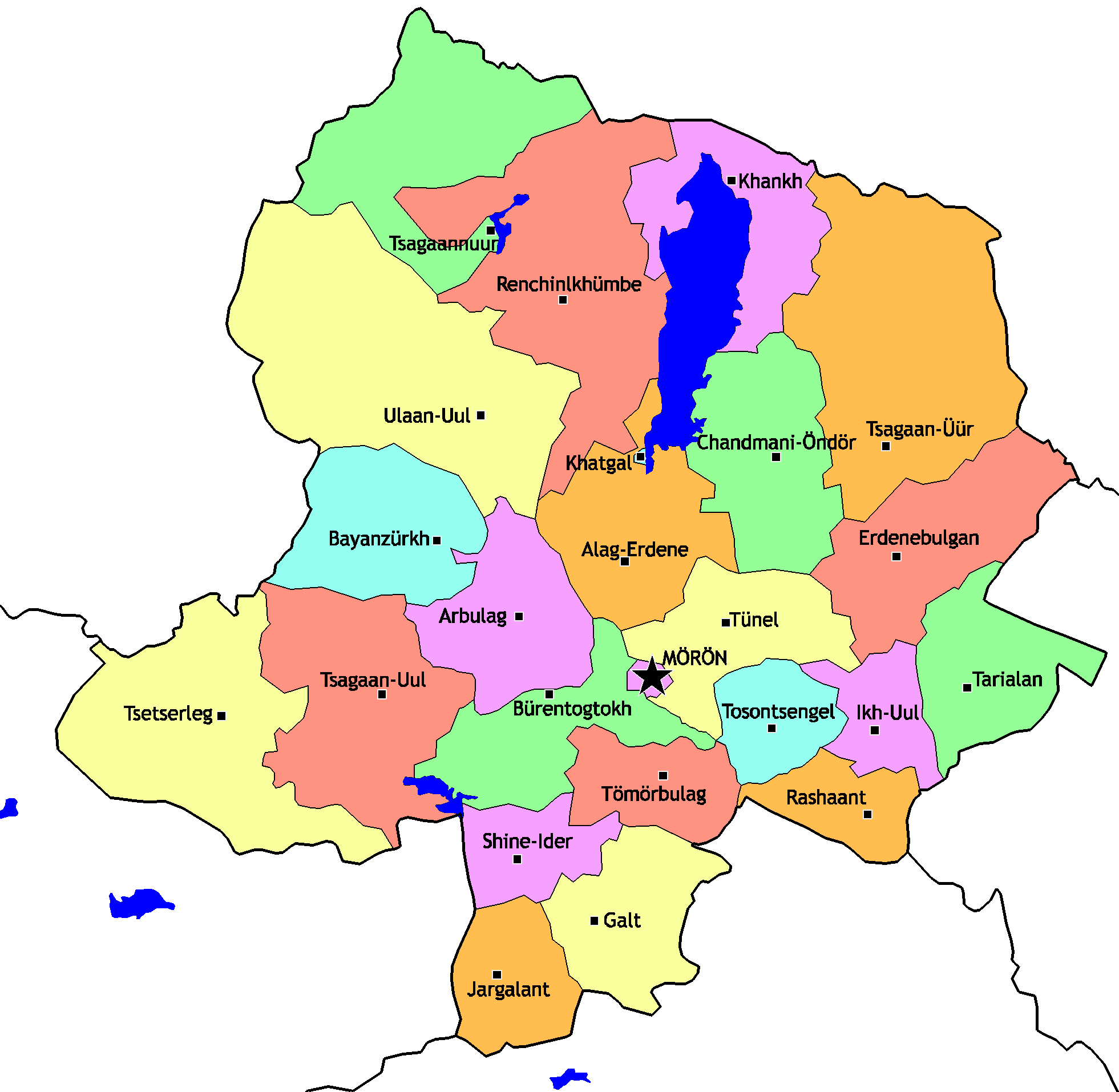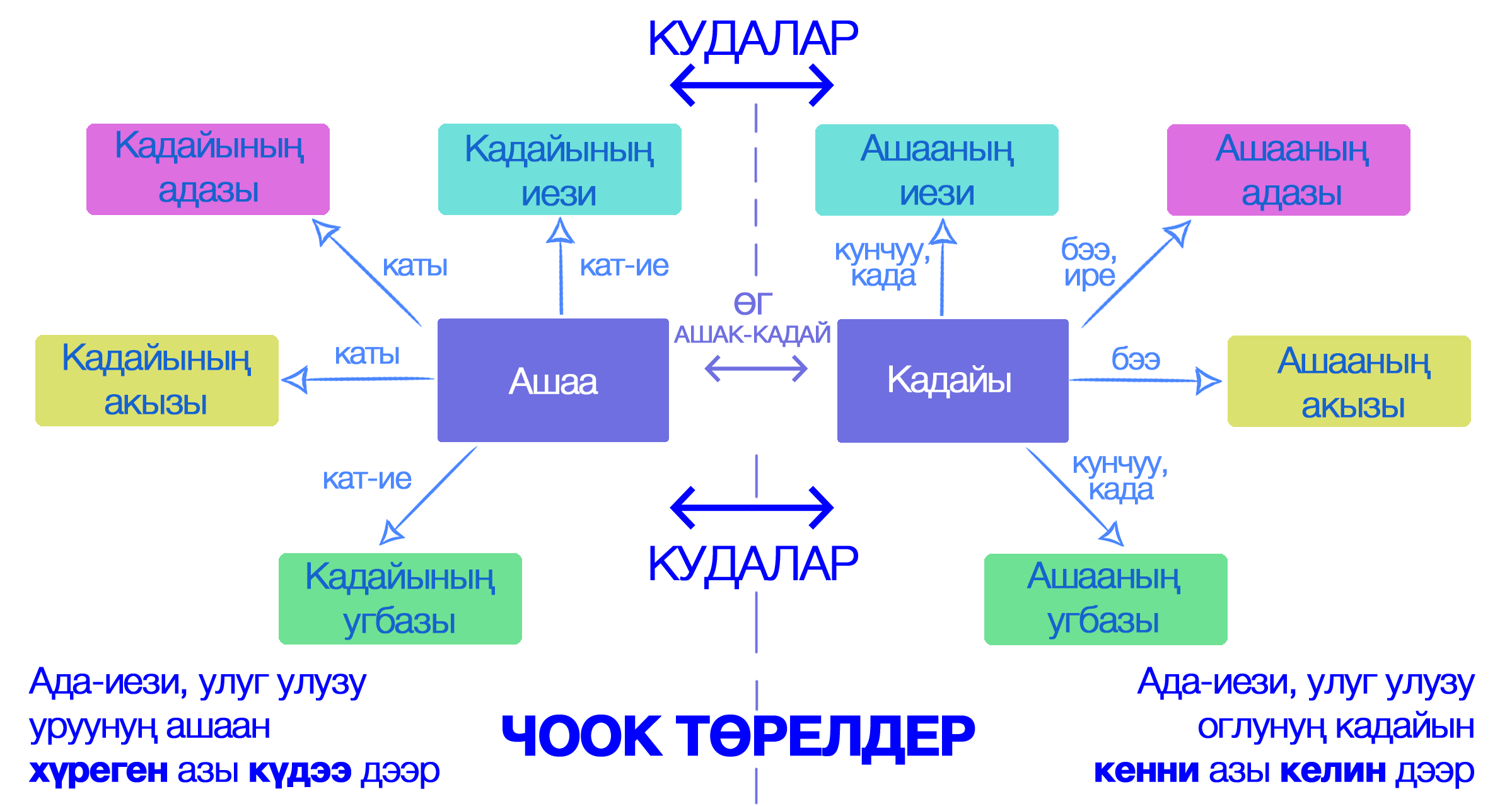|
Dukhan Language
Dukha or Dukhan is a nearly extinct Turkic language or dialect variety of Tuvan language spoken by the Dukhan (a.k.a. Tsaatan) herder people in the Tsagaan-Nuur county of Khövsgöl Province in northern Mongolia. Dukhan belongs to the Taiga subgroup of Sayan Turkic (which also includes Soyot–Tsaatan and Tofa). This language is nearly extinct and is only spoken actively by no more than 40 people. The ISO 639-3 proposal (request) code was dkh, but this proposal was rejected. It is mostly related to the Soyot language of Buryatia. Also, it is related to the language of Tozhu Tuvans and the Tofa language Tofa (Tofa: Тоъфа дыл ''Tòfa dıl''), also known as Tofalar or Karagas, is a Turkic language spoken in Russia's Irkutsk Oblast by the Tofalars, an indigenous people of the region. Tofa forms a dialect continuum with the closely related .... Today, it is spoken alongside Mongolian. Dukhan morphophonemic units are written with capital letters, similar to its sister ... [...More Info...] [...Related Items...] OR: [Wikipedia] [Google] [Baidu] |
Mongolia
Mongolia is a landlocked country in East Asia, bordered by Russia to the north and China to the south and southeast. It covers an area of , with a population of 3.5 million, making it the world's List of countries and dependencies by population density, most sparsely populated sovereign state. Mongolia is the world's largest landlocked country that does not border an Endorheic basin, inland sea, and much of its area is covered by grassy steppe, with mountains to the north and west and the Gobi Desert to the south. Ulaanbaatar, the capital and List of cities in Mongolia, largest city, is home to roughly half of the country's population. The territory of modern-day Mongolia has been ruled by various nomadic empires, including the Xiongnu, the Xianbei, the Rouran, the First Turkic Khaganate, the Second Turkic Khaganate, the Uyghur Khaganate and others. In 1206, Genghis Khan founded the Mongol Empire, which became the largest List of largest empires, contiguous land empire i ... [...More Info...] [...Related Items...] OR: [Wikipedia] [Google] [Baidu] |
Soyot–Tsaatan Language
Soyot (or Soyot–Tsaatan) is an extinct and revitalizing Turkic language of the Siberian Sayan branch similar to the Dukhan language and closely related to the Tofa language. Two dialects/languages are spoken in Russia and Mongolia: Soyot in the Okinsky District of the Republic of Buryatia (Russia) and Tsaatan (Uriankhai Uyghur) in the Darkhad valley of Mongolia. The language is revitalizing in primary schools. In 2002, V. I. Rassadin published a Soyot–Buryat–Russian dictionary. In 2020, he published a children's picture dictionary in the Soyot language, along with Russian, Mongolian, and English translations. Classification Soyot belongs to the Turkic family of languages. Within this family, it is placed in the Sayan Turkic branch. According to some researchers, the Sayan Turkic branch has five languages: *Sayan Turkic ** Tuvan (ISO 639:tyv) ** Tofa (ISO 639:kim) **Soyot **Dukhan (ISO 639:dkh, rejected) **Tuba (extinct, not to be confused with the Tubalar dialect of N ... [...More Info...] [...Related Items...] OR: [Wikipedia] [Google] [Baidu] |
Languages Of Mongolia
Mongolia is a landlocked country in East Asia, bordered by Russia to the north and China to the south and southeast. It covers an area of , with a population of 3.5 million, making it the world's List of countries and dependencies by population density, most sparsely populated sovereign state. Mongolia is the world's largest landlocked country that does not border an Endorheic basin, inland sea, and much of its area is covered by grassy steppe, with mountains to the north and west and the Gobi Desert to the south. Ulaanbaatar, the capital and List of cities in Mongolia, largest city, is home to roughly half of the country's population. The territory of modern-day Mongolia has been ruled by various nomadic empires, including the Xiongnu, the Xianbei, the Rouran, the First Turkic Khaganate, the Second Turkic Khaganate, the Uyghur Khaganate and others. In 1206, Genghis Khan founded the Mongol Empire, which became the largest List of largest empires, contiguous land empire i ... [...More Info...] [...Related Items...] OR: [Wikipedia] [Google] [Baidu] |
Tsagaannuur, Khövsgöl
Tsagaannuur (, ''white lake'') is a sum of Khövsgöl aimag. The area is 5,410 km2. In 2000, Tsagaannuur had a population of 1,317 people, of which most identified themselves as Darkhad. There were 269 inhabitants who identified themselves as Tsaatan ethnicity. The sum center, officially named ''Gurvansaikhan'' (), is located at the shore of Dood Tsagaan Lake. History The Tsagaannuur sum was split off from Renchinlkhümbe in 1985. Administrative divisions The district is divided into two bags, which are: * Gurvansaikhan * Kharmai Economy In 2004, there were about 8,000 heads of livestock, among them 2,400 goats, 2,100 sheep, 2,300 cattle and yaks, 1,100 horses, 6 camels, and 632 reindeer The reindeer or caribou (''Rangifer tarandus'') is a species of deer with circumpolar distribution, native to Arctic, subarctic, tundra, taiga, boreal, and mountainous regions of Northern Europe, Siberia, and North America. It is the only re .... Tsagaannuur houses the ... [...More Info...] [...Related Items...] OR: [Wikipedia] [Google] [Baidu] |
Tozhu Tuvans
The Tozhu Tuvans, Tozhu Tuvinians, Todzhan Tyvans or Todzhinians (own name: Тугалар ''Tugalar'' or Тухалар ''Tukhalar''; Russian Тувинцы-тоджинцы ''Tuvincy-todžincy'', Тоджинцы ''Todžincy'') are a Turkic subgroup of the Tyvans living in Todzhinsky District of the Republic of Tyva. The Tozhu Tyvans are reindeer The reindeer or caribou (''Rangifer tarandus'') is a species of deer with circumpolar distribution, native to Arctic, subarctic, tundra, taiga, boreal, and mountainous regions of Northern Europe, Siberia, and North America. It is the only re ... herders.http://www.severcom.ru/nations/item32.html Информация о тоджинцах на сайте Совета Федерации РФ Language The language of the Tozhu Tyvan people is a subdialect of Eastern (or Northeastern) dialect of Tyvan language. The Tozhu Tyvan dialect is classified as part of the Taiga Sayan Turkic branch of Sayan Turkic along with Tere-Khöl ... [...More Info...] [...Related Items...] OR: [Wikipedia] [Google] [Baidu] |
Buryatia
Buryatia, officially the Republic of Buryatia, is a republic of Russia located in the Russian Far East. Formerly part of the Siberian Federal District, it has been administered as part of the Far Eastern Federal District since 2018. To its north lie Irkutsk Oblast and Lake Baikal, the deepest lake in the world; Zabaykalsky Krai to the east; Tuva to the west and Mongolia to the south. Its capital is the city of Ulan-Ude. It has an area of with a population of 978,588 ( 2021 Census). It is home to the indigenous Buryats. Geography The republic is located in the south-central region of Siberia along the eastern shore of Lake Baikal. *Area: *Borders: **Internal: Irkutsk Oblast (W/NW/N), Zabaykalsky Krai (NE/E/SE/S), Tuva (W) **International: Mongolia ( Bulgan Province, Khövsgöl Province and Selenge Province) (S/SE) **Water: Lake Baikal (N) *Highest point: Mount Munku-Sardyk () Rivers Major rivers include: * Barguzin River * Irkut River * Kitoy River * Oka River * Sele ... [...More Info...] [...Related Items...] OR: [Wikipedia] [Google] [Baidu] |
Soyot-Tsaatan Language
Soyot (or Soyot–Tsaatan) is an extinct and revitalizing Turkic language of the Siberian Sayan branch similar to the Dukhan language and closely related to the Tofa language. Two dialects/languages are spoken in Russia and Mongolia: Soyot in the Okinsky District of the Republic of Buryatia (Russia) and Tsaatan (Uriankhai Uyghur) in the Darkhad valley of Mongolia. The language is revitalizing in primary schools. In 2002, V. I. Rassadin published a Soyot–Buryat–Russian dictionary. In 2020, he published a children's picture dictionary in the Soyot language, along with Russian, Mongolian, and English translations. Classification Soyot belongs to the Turkic family of languages. Within this family, it is placed in the Sayan Turkic branch. According to some researchers, the Sayan Turkic branch has five languages: *Sayan Turkic ** Tuvan (ISO 639:tyv) ** Tofa (ISO 639:kim) **Soyot **Dukhan (ISO 639:dkh, rejected) **Tuba (extinct, not to be confused with the Tubalar dialect of ... [...More Info...] [...Related Items...] OR: [Wikipedia] [Google] [Baidu] |
Tofa Language
Tofa (Tofa: Тоъфа дыл ''Tòfa dıl''), also known as Tofalar or Karagas, is a Turkic language spoken in Russia's Irkutsk Oblast by the Tofalars, an indigenous people of the region. Tofa forms a dialect continuum with the closely related Tuvan language, and shares many features with Tuvan. Tofa is a critically endangered language, as classified by the UNESCO Atlas of the World's Languages in Danger, and recent estimates for speakers run from 67 to fewer than 40 individuals. Only 3 people can speak it fluently. Classification Tofa is most closely related to the Tuvan languageLars Johanson (1998) "The History of Turkic". In Lars Johanson & Éva Ágnes Csató (eds) ''The Turkic Languages''. London, New York: Routledge, 81-125Classification of Turkic languages at Turkiclanguages.com/ref> and forms a dialect continuum with it. Tuha and Tsengel Tuvan may be dialects of either Tuvan or Tofa. Tofa shares a number of features with these languages, including the preservation of *d ... [...More Info...] [...Related Items...] OR: [Wikipedia] [Google] [Baidu] |
Dukha People
The Dukha, Dukhans or Duhalar ( Mongolian: Цаатан, Tsaatan, духа́, Dukha) are a small Turkic community of semi-nomadic reindeer herders living in a sum of Khövsgöl Province, Mongolia called Tsagaannuur. The Dukha are divided into two groups: those from northeast Tuva and those from southeast Tuva. They are the only reindeer herders in Mongolia, and are considered one of the earliest domesticators of any animal.Régis DefurnauxOn the Move With Mongolia’s Nomadic Reindeer Herders ''New York Times'' (August 23, 2021). The Tsaatan, whose name means ‘those who have reindeer’ in the Mongolian language, were originally Tuvinian reindeer herders. Language The Dukhan language (SIL International rejected code dkh) is an endangered Turkic variety spoken by approximately five hundred people in the Tsagaan-Nuur county of the Khövsgöl region of northern Mongolia. Dukhan belongs to the Taiga subgroup of Sayan Turkic ( Tuvan, Tofa).Elisabetta Ragagnin (2011)Dukhan, ... [...More Info...] [...Related Items...] OR: [Wikipedia] [Google] [Baidu] |
Khövsgöl Province
Khövsgöl () is the northernmost of the 21 Aimags of Mongolia, aimags (provinces) of Mongolia. The name is derived from Lake Khövsgöl. Geography and history The round-topped Tarvagatai (Khangai), Tarvagatai, Bulnain and Erchim sub-ranges of the Khangai Mountains, Khangai massif dominate the south and southwest of the largely mountainous province, and north and west of Lake Khövsgöl, lie the alpine Khoridol Saridag mountains, Khoridol Saridag, Ulaan Taiga, and Mönkh Saridag mountains. The center and eastern parts of the province are less mountainous, but still hilly. The region is well known in Mongolia for its natural environment, and Lake Khövsgöl is one of the country's major tourist attractions. The largest forests of Mongolia are located around and to the north of the lake, extending the South Siberian forest steppe, South Siberian taiga. The aimag was founded in 1931. Khatgal, Khövsgöl, Khatgal was the administrative center until 1933; since then it has been Mörö ... [...More Info...] [...Related Items...] OR: [Wikipedia] [Google] [Baidu] |
Tuvan Language
Tuvan, also spelt Tyvan, is a Turkic language spoken in the Republic of Tuva in South Central Siberia, Russia. There are small groups of Tuvans that speak distinct dialects of Tuvan in China and Mongolia. History The earliest record of Tuvan is from the early 19th century by ''Wūlǐyǎsūtái zhìlüè'' (), Julius Klaproth 1823, Matthias Castrén 1857, Nikolay Katanov, Vasily Radlov, etc. The name Tuva goes back as early as the publication of ''The Secret History of the Mongols''. The Tuva (as they refer to themselves) have historically been referred to as Soyons, Soyots or Uriankhais. Classification Tuvan (also spelled Tyvan) is linguistically classified as a Sayan Turkic language. Its closest relative is the moribund Tofa. Tuvan, as spoken in Tuva, is principally divided into four dialect groups; Western, Central, Northeastern, Southeastern. * Central: forms the basis of the literary language and includes Ovyur and Bii-Khem subdialects. The geographical c ... [...More Info...] [...Related Items...] OR: [Wikipedia] [Google] [Baidu] |
Atlas Of The World's Languages In Danger
The UNESCO ''Atlas of the World's Languages in Danger'' was an online publication containing a comprehensive list of the world's endangered languages. It originally replaced the ''Red Book of Endangered Languages'' as a title in print after a brief period of overlap before being transferred to an online-only publication. History In 1992, the International Congress of Linguists (CIPL) meeting in Canada discussed the topic of endangered languages, as a result of which it formed the Endangered Languages Committee. It held an international meeting also in 1992 in Paris to place the topic before the world and initiate action. The meeting was considered important enough to come under the authority of UNESCO. At the instigation of Stephen Wurm the committee resolved to create a research center, the International Clearing House for Endangered Languages (ICHEL) and to publish the UNESCO ''Red Book of Endangered Languages'' based on the data it collected, the title being derived fr ... [...More Info...] [...Related Items...] OR: [Wikipedia] [Google] [Baidu] |


